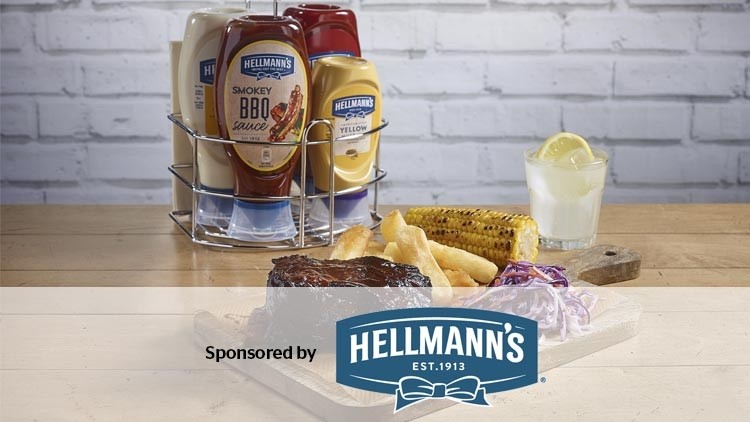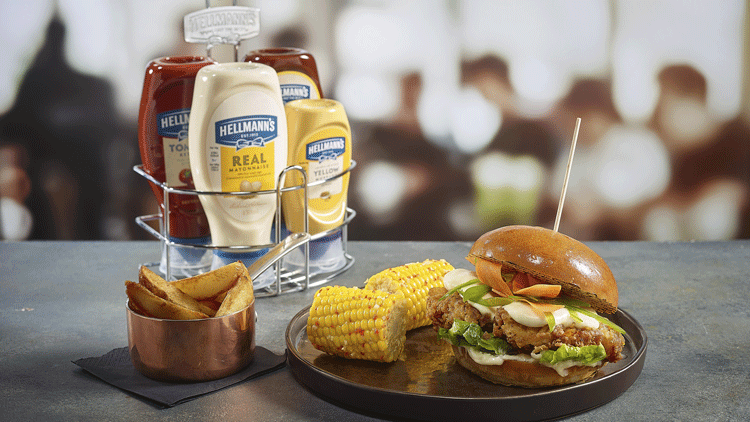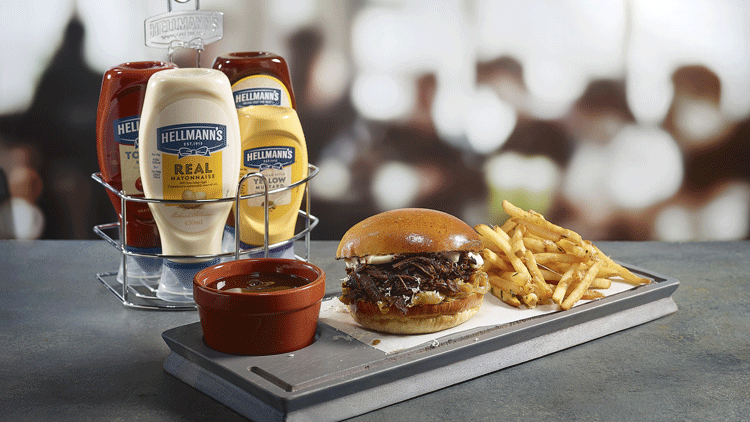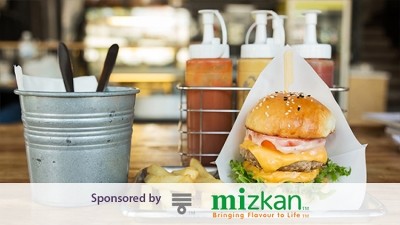Sponsored feature
The guide to condiments

Most people will be familiar with that horrible moment when you naively grab a bottle, give it a lusty squeeze over your chips and out squirts a lurid torrent of goo that has more in common with wallpaper paste than a quality condiment.
Yet, while most chefs hate cutting corners in the kitchen, the same principles do not always stretch beyond the pass to the dining table. Whether produced by world famous brands or small scale producers, quality condiments say a lot about a venue’s aspirations and - for most at least - generic is a no no.
Along with crappy condiments, another common issue is a lack of provision and or visibility. According to a 2018 UFS Consumer and Operator Brand Research survey of over 800 consumers and 270 operators by Cambridge Direction, 79% of customers want a wide range of condiments available on the table.
Clearly multi-Michelin-starred joints aren’t going to plonk a bottle of ketchup on the table as part of their dining room mise en place, but at most other styles of restaurants and pubs bottles of quality condiments are a welcome addition to the table.
Packaging
Packaging is - therefore - an important consideration. Glass bottles are attractive and easy to clean if you’re washing out and refilling from a larger container but they can be awkward to use, with customers struggling to coax out a drop one moment and creating a (wasteful) lake of sauce the next.
Plastic bottles are easier to use but may not have a premium enough look and feel for some venues. Screw top jars are easy too, but less hygienic due to a wider opening. Sachets should be avoided in most restaurants: though they’re good news for portion control, they are inherently packaging intensive.
Condiment companies will often supply caddies free of charge
The good news is that most condiment companies have a range of packaging formats to suit different styles of venues and different operational requirements.
Another consideration is how to store condiments. Sauce caddies are an option, allowing servers to easily transport a whole collection. Some restaurants commission a custom design, while others use ones supplied free-of-charge by condiment companies.
Curating your condiments
While specialist restaurants - including barbecue joints and Asian establishments - have their own traditions, most restaurants in 2019 will be looking at six main categories: mayonnaise, ketchup, chilli sauce, mustard, brown sauces and salt and pepper (it’s debatable whether seasonings are condiments, but they’re added to food at table by guests so it makes sense to include them in the conversation.)
Mayonnaise
Everyone’s favourite emulsion, mayonnaise is the world’s most adaptable sauce. It can be enjoyed as is or used as the base for innumerable other preparations, including tartare sauce, aioli and sauce gribiche. While it’s not difficult to make in house, homemade mayonnaise has an impractically short lifespan for most restaurants. Buying in a quality brand will make sense for nearly every operator that wants to provide mayonnaise at table. And most will want to, with 70% diners expecting to see the condiment on the table according to a 2018 UFS Consumer Online Survey by Cambridge Direction.
Hellmann’s is the nation’s favourite mayonnaise according to Nielsen Retail’s UK Grocery value Sales Index (11.08.2018), and is made with freerange eggs and sustainably sourced oils. Numerous packaging formats are available for Hellmann’s Real Mayonnaise, but the key products for use on the floor are from Hellmann’s The Front of House range (430ml and 250ml).
The rise of US barbecue and Asian cuisine means customers want more adventurous condiments
Ketchup
Condiment makers are also now looking beyond tomatoes for their ketchup. Prior to Christopher Columbus, ketchup - or catsup as it was then known - was made with other types of fruit and vegetables. Mushrooms are surprisingly good when pureed and mixed with vinegar and spices, as are bananas.
Filipino-owned fast food chain Jollibee serves banana ketchup with some of its dishes, including its infamous take on ‘spaghetti Bolognese’. Those after something a bit more cutting edge from their ketchup should look no further than ketchup leather, a dehydrated version of the normally pourable condiment. Developed by Ernesto Uchimura of Plan Check Kitchen + Bar in Los Angeles, the product is said to make for a sturdier burger without the sogginess that can come from regular ketchup.
Chilli sauce
Chilli sauce would not have featured on a list of key condiments a decade ago, but the rise of US barbecue, Asian and Mexican food in the UK and consequent opening up of the nation’s tastebuds has made it essential for restaurants to offer something with a bit of heat. There are mind-boggling variety available, from macho blow-your-head off concoctions to more restrained numbers.
With such a large number available, it’s easy to find a sauce that complements your style of venue or cuisine type. For most restaurants, it will be a case of choosing one sauce for chilli heads and a milder one for those that want to take it easy.
Mustard
Mustard is made by mixing the ground seeds of the mustard plant with liquid, but by playing around with the varieties of seeds, liquids and other flavours a surprising amount of different varieties can be made. Most venues should have English, grain, Dijon and American mustard available, but not necessarily all on the table at the same time.
Brown sauce
Brown sauce is an essential sauce to stock if you serve breakfast or brunch-y dishes. It arguably goes better with bacon sandwiches and full English breakfasts than ketchup (this was confirmed by a recent social media survey). The ingredients traditionally include varying combination of tomatoes, molasses, dates, apples, tamarind, spices, vinegar, and occasionally raisins with the taste ranging from tart to sweet.
While not interchangeable with brown sauce, Worcestershire sauce has a similar flavour profile so should be considered as being within the same category.
Salt and pepper
Basic salt - usually a by-product of the chemical industry and therefore extremely cheap - will be fine for very casual venues but isn’t a great fit for anywhere aspirational. Salt provides a good opportunity to go local, or at least a bit local, with high quality salt produced in all corners of the UK including Cornwall, Essex and North Wales.
While many restaurants provide rock salt and sea salt in tiny bowls to be pinched up by customers, this is a fairly wasteful practice as really any salt the customer has touched needs to be binned, or at least boiled up in water to sanitise. A high quality salt mill is therefore a good option.
Whether salt should be placed on the table at very high-end restaurants is a matter of much debate - many top chefs are so confident in their team’s seasoning abilities that they baulk at the thought of punters adding extra seasoning at table. Whichever side of the debate people sit, most would agree that if a customer requests salt they should receive it without criticism.
Much like basic salt, the sneezy grey powder that is pre-ground pepper is best avoided by all but the most basic venues (pepper loses its flavour very quickly after being ground). If pepper mills aren’t a good fit for your business, cracked pepper is a marginally better bet. Even when whole and in a decent and well-maintained pepper mill, not all pepper is created equal so it pays to source something with provenance.
Hellmann’s provides full range of table top condiments. Key products include Hellmann’s Tomato Ketchup, Hellmann’s BBQ Sauce and Hellmann’s American Style Yellow Mustard. Hellmann’s parent brand Unilever is also behind Colman’s, the nation’s favourite English mustard according to Nielsen’s Retail Grocery Value Sales report (06.10.2018). Head to ufs.com/goodreviews for more information.






















